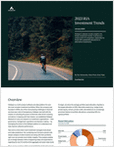70. Organize targeted events.
Rather than having an event for all of my clients, I’ll have very small, targeted events. I haven’t had a lot of success hosting a happy hour and inviting all the clients. I don’t think they feel special. Where if you have a very targeted event, they know each other, they know who’s going to be there, they’re comfortable and they feel special because you planned for them.
—Andrea Blackwelder
69. Add value in personal ways.
Check out the refrigerator door when you are in someone’s home. Children and grandchildren usually fill it with pictures and drawings. Learn about these kids. If one is in Little League think about sponsoring the team. Does one have a school trip coming up? Donate money for lunch on the trip or sponsor the entire trip. Give the client something to remember the business by not dealing with the company.
— Marvin LeBlanc
68. Send a tangible (edible) thank you.
After a sale, no matter the amount, go to local grocery store or bakery. Buy a sheet cake. Have them write, in icing, thank you. Deliver cake to your new client’s office or place of work. Be sure to scatter your business cards all around the cake and on the cake box. Sounds quirky, but I have gotten more new clients and even just people calling to ask questions about their situation. By the way, make sure your bakery has good cake. Bad cake is not good.
— Victor F. Hallman
67. Take control of your prospecting.
Rather than asking clients to do your prospecting for you, do it yourself. Let me repeat: do it yourself. That might sound simple or trite. But, it’s the truth. Don’t sit by the phone waiting for your clients to do the work for you: do it yourself! And do it this way: Ask your clients for direct introductions to hand-picked prospects. That’s it: Ask for direct introductions. This method gives you complete control of the referral process, takes the burden off your clients and delivers an introduction to someone you already know is a great prospect for you.
— Paul McCord
66. Try the 3/3/2 knockout method.
How often and for how long should you follow up with a prospect? Make three follow-up attempts to connect with a prospect, spaced three business days apart, utilizing both email and voicemail. Before you leave a message, make multiple attempts at various times of the day to connect with your prospect (i.e., 8:15 a.m., 10:20 a.m. and 1:00 p.m.). You may think this is overkill and too much follow-up too quickly. However, it is critical to remember that your prospects receive dozens of calls and hundreds of emails every single day. The likelihood of them remembering your “touch” three days later is very slim indeed. Keep your message brief and targeted, suggesting you might have a solution to a potential pain point of theirs.
— Kelley Robertson








 May 22, 2014 at 12:00 AM
May 22, 2014 at 12:00 AM



















